Nanocrystalline cellulose-geniposide complex enhances gut-brain axis modulation for depression treatment
- PMID: 40287572
- PMCID: PMC12033350
- DOI: 10.1038/s42003-025-07934-y
Nanocrystalline cellulose-geniposide complex enhances gut-brain axis modulation for depression treatment
Abstract
Depression, a major global health issue, is closely associated with imbalances in gut microbiota and altered intestinal functions. This study investigates the antidepressant potential of a composite of Geniposide (GP) and Nanocrystalline Cellulose (NCC), focusing on its effects on the gut-brain axis. Utilizing network pharmacology, GP was identified as a key compound targeting the BCL2 gene in depression management. Experimental approaches, including a chronic unpredictable mild stress (CUMS) model in mice, cellular assays, and fecal microbiota transplantation (FMT), were used to evaluate the composite's effectiveness. Results indicate that GP activates the adenosine monophosphate-activated protein kinase (AMPK) pathway by upregulating BCL2, enhancing intestinal barrier integrity, and balancing gut flora. These mechanisms contribute to its positive effects on hippocampal function and depressive-like behaviors in mice, suggesting that the GP-NCC composite could be a promising avenue for developing depression therapies that target gut health.
© 2025. The Author(s).
Conflict of interest statement
Competing interests: The author declares no competing interests. Ethical approval: All animal experiments were approved by the Animal Ethics Committee of Shenzhen Luohu District Hospital of Traditional Chinese Medicine (No. 2023-LHQZYYYXLL-KY-111).
Figures
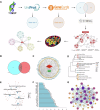
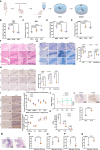
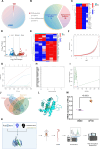
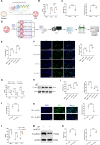


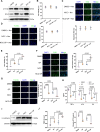
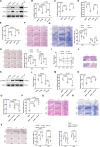
Similar articles
-
Co-decoction of Lilii bulbus and Radix Rehmannia Recens and its key bioactive ingredient verbascoside inhibit neuroinflammation and intestinal permeability associated with chronic stress-induced depression via the gut microbiota-brain axis.Phytomedicine. 2024 Jul;129:155510. doi: 10.1016/j.phymed.2024.155510. Epub 2024 Mar 11. Phytomedicine. 2024. PMID: 38696921
-
Jasmine tea extract prevents CUMS-induced depression-like behaviors through the modulation of microbiota-gut-brain axis.Food Res Int. 2025 May;209:116214. doi: 10.1016/j.foodres.2025.116214. Epub 2025 Mar 14. Food Res Int. 2025. PMID: 40253129
-
Administration time modify the anxiolytic and antidepressant effects of inulin via gut-brain axis.Int J Biol Macromol. 2025 Feb;288:138698. doi: 10.1016/j.ijbiomac.2024.138698. Epub 2024 Dec 11. Int J Biol Macromol. 2025. PMID: 39672439
-
Current landscape of fecal microbiota transplantation in treating depression.Front Immunol. 2024 Jun 25;15:1416961. doi: 10.3389/fimmu.2024.1416961. eCollection 2024. Front Immunol. 2024. PMID: 38983862 Free PMC article. Review.
-
Microbiota-Gut-Brain Axis and Antidepressant Treatment.Curr Top Behav Neurosci. 2024;66:175-216. doi: 10.1007/7854_2023_449. Curr Top Behav Neurosci. 2024. PMID: 37962812 Review.
References
-
- Monroe, S. M. & Harkness, K. L. Major depression and its recurrences: life course matters. Annu Rev. Clin. Psychol.18, 329–357 (2022). - PubMed
MeSH terms
Substances
LinkOut - more resources
Full Text Sources
Medical

